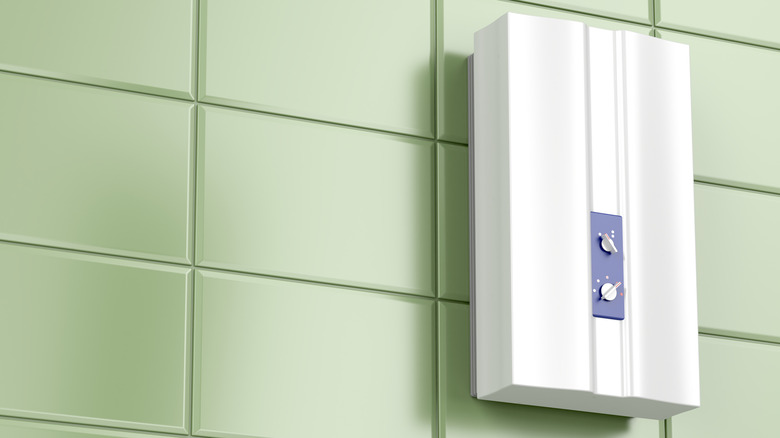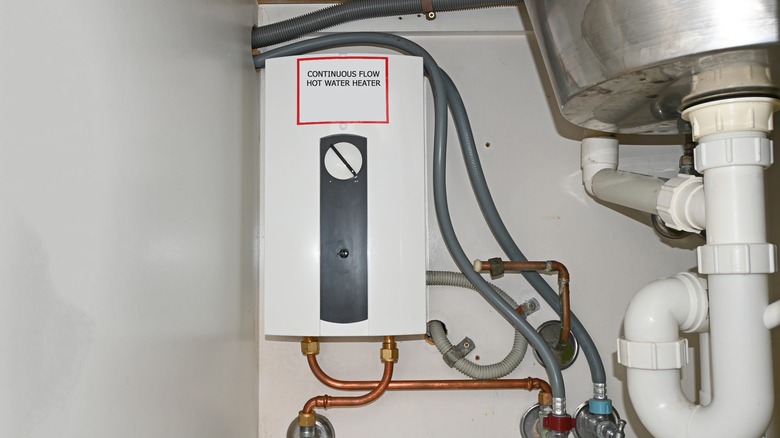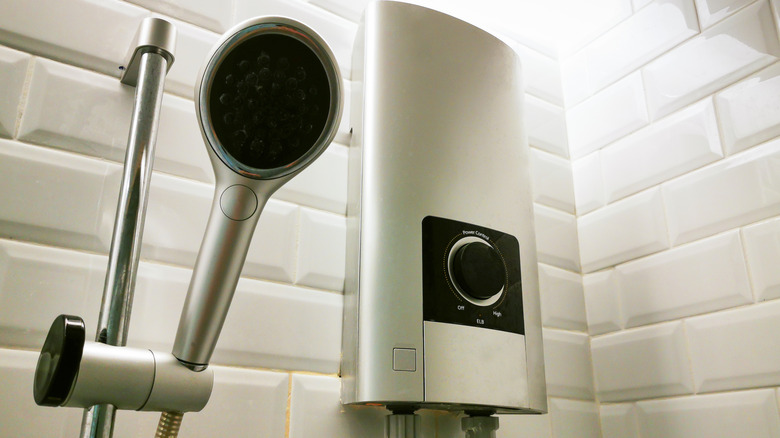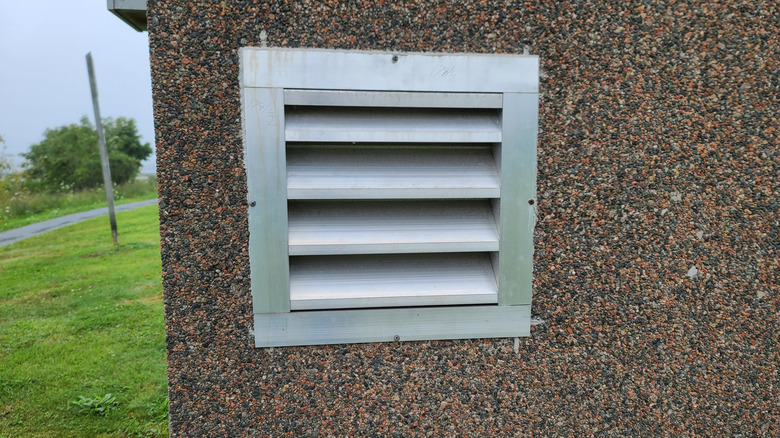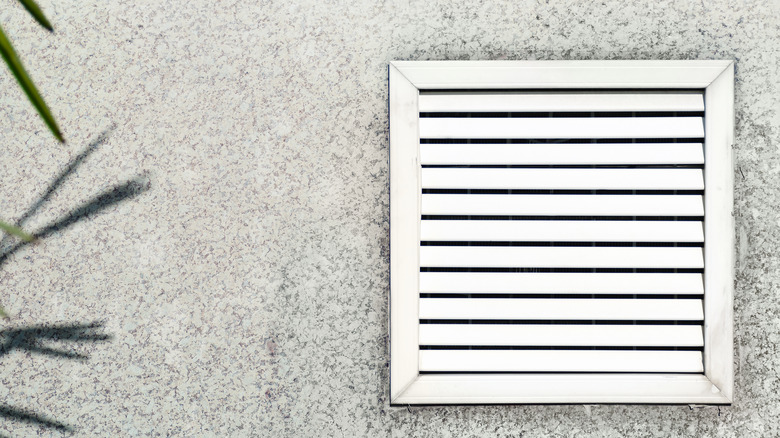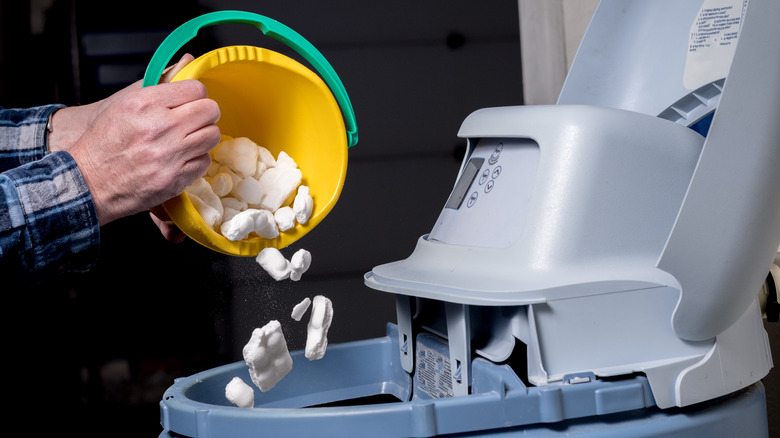Here's How To Maintain Your Tankless Water Heater, According To An Expert
A tankless water heater is just what it sounds like — a hot water heater that lacks a tank and instead heats water at the time of use. Many people are making the transition to using them over large, tanked systems — and for good reason. Tankless water heaters offer numerous benefits to property owners. As noted by Home Depot, they are 24% to 34% more energy-efficient than traditional water heaters, which will save you money in the long run. In fact, you'll never have to worry about running out of hot water either since they provide on-demand warmth. They are space-saving and overall dependable, too. The key is maintenance.
Jake Romano, manager of Joe the Plumber, offers insights into how to properly maintain a tankless water heater. "While a well-maintained water heater usually lasts around 10 years, a well-maintained tankless water heater can last 20 to 25 years," he said. "It doesn't take much to maintain a tankless water heater, but there are some things you should do every year."
Flush your heater annually
Of course, while routine maintenance ensures the system will continue to work well, experts suggest following a few key recommendations. "Even if your home uses the municipal water supply, your water will have some dissolved solids, such as calcium and other minerals," Romano points out. "Unfortunately, these minerals tend to build up inside your water heater."
It's not always easy to notice this happening initially, but there are a few changes you may observe. "As these minerals cake on the insides of your water heater, your water heater will work harder and less efficiently, and you will lower the expected lifespan of the machine," Romano shares. "The good news is that you can avoid this by flushing the water heater once a year, and it only takes around an hour to do."
Romano offers these step-by-step instructions for doing just that, in which you'll need the following:
- A 5-gallon bucket
- 3 gallons of vinegar
- A submersible water pump
- Two hoses (These should have been supplied with your water heater, but you can buy washing machine hoses from most hardware stores.)
Follow these steps:
- Turn off the machine and shut off the power supply (whether it's gas or electric).
- Shut the isolation valves. There should be a blue inlet valve for cold water and a red outlet valve for hot water. These valves are shut when the handle is perpendicular to the pipe. If the handle is parallel to the pipe, then it's still open. Make sure these valves are closed, or you're going to have a bad time.
- Connect the hoses to the water heater. There should be some caps that you can unscrew to remove, and the hoses should screw onto them. Then, connect the water pump to the other end of the hose that is connected to the inlet. Place the pump in the bucket and the other end of the outlet hose into the bucket. Then, empty the 3 gallons of vinegar into the bucket.
- Open the valves for the flush ports. Near where the hoses connect to the water heater, there should be a valve on both the inlet and the outlet. Open both of these.
- Turn on the pump and flush out everything. Once you turn on the pump, it will begin pumping vinegar through the water heater and back into the bucket. Let this run for about 45 minutes to an hour. Then, turn off the water pump.
- Flush out the remaining vinegar from the water heater. To begin this step, place the flush valve outlet hose in the nearest floor drain. Open the cold-water inlet (but keep the hot water outlet closed). Water will enter the water heater and come out of the flush port and go down your drain. Run this for about five to 10 minutes to clear all the vinegar and stuff inside the water heater.
- Close the flush port valves, disconnect the hoses, open the hot water outlet valve, restore energy, and turn the water heater back on.
Keep the water filter clean
Tankless water heaters are designed to minimize buildup, but you still need to play an active role in their overall maintenance. "There's a small water filter on your tankless water heater that is intended to prevent solids from entering the water heater and causing damage," says Romano, noting if you're unsure of its location, check the owner's manual. "Given enough time, this filter will become caked with debris, which will block water flow." Without proper attention, this could lead to a significant repair need.
To minimize this problem, keep the filter clear. To do so, Romano suggests the following: "While flushing out your water heater every year, I strongly recommend cleaning the water filter." For most systems, this is fairly easy to do. "Turn the power off and cut energy, then remove the lower panel," Romano explains. "Take out the filter, clean it, and replace [it]." If there's significant damage or build-up you cannot remove, you may need to replace the filter. Be sure to match the make and model when swapping them out.
Clean the air filter
It's not just water that can clog things up. "If you have a gas water heater, you'll have an air intake that pulls air from outside and is used for combustion," Romano shares. In that vein, look for venting on the water heater to know if it's a gas system. "This air is pulled through an air filter to collect any dirt, leaves, or other debris that may otherwise enter the water heater," he continues. "As the filter catches more debris, airflow becomes restricted, and the machine has to work harder for the same amount of air. As such, you're asking for problems." Not only does this make it harder for your system to work, reducing energy efficiency, but it may also contribute to poor air quality in your home.
The solution? "While everything is off and disconnected, take the face plate off and look for the air intake on the inside of the water heater," Romano shares. "There is likely a screw holding the air intake in place." Again, if you're unsure of the location or access point, be sure to check the owner's manual. "Remove the screw, then pull the thing toward you," he said. "From there, you should be able to pop the air filter out. Rinse it out in water, then dry it off with paper towels. After that, put everything back together again."
Maintain proper vent cleaning
If allowed to build up over time, debris can be a constant problem with tankless water heaters. For those with a gas water heater, it's essential to pay close attention to this risk. "Gas water heaters obviously combust gas to run the machine," Romano shares. "Using ducts, the water heater exhausts fumes and heat outside." You'll likely have a vent outside your home, allowing this to happen. "If the vents become blocked, it can cause trouble for your water heater and is a huge fire risk (e.g., leaves in the vents)," Romano reveals. On a routine basis, make sure there's nothing getting in the way by checking the exterior each season.
"Turn off the gas supply to the water heater, grab your shop vac, and plug it in. Put extensions on the vacuum, as needed; then, disconnect the vent from the heater. Insert the vacuum tube into the vent and start vacuuming," Romano recommends. "You can likely find a right-sized shop vac for this job at a home improvement store.
"Additionally, there are duct cleaning tools available on the internet to scrub the soot out of the vent if you want," he continues. That soot is from carbon buildup, and removing it helps boost safety. "Finish by reconnecting the vent, restoring the gas supply, and turning the water heater bank on."
Get a water softener
The hardness of water matters. According to the U.S. Department of the Interior, hardness is defined by the number of minerals found in the water, but you'll likely notice it if the water feels slimy or glass clouds up. "If you have hard water, you should definitely get a water softener," Romano said. "If you're not aware, hard water is water that is rich with dissolved solids, such as calcium, magnesium, and other minerals.
"These minerals have a ton of effects on both your body, possessions, and plumbing system. [They] will make your hair brittle, your skin itchy, cause other health concerns, and exponentially increase the speed at which your water heater, plumbing fixtures, and plumbing system degrade."
Because this is a big risk to your water system, it's a good idea to be proactive. "So, you can call a water treatment company or awesome plumbing company and they will test your water right then and there," Romano recommends. If you have hard water, it's advantageous to install a water softener appropriately sized for your home and then properly maintain it.
